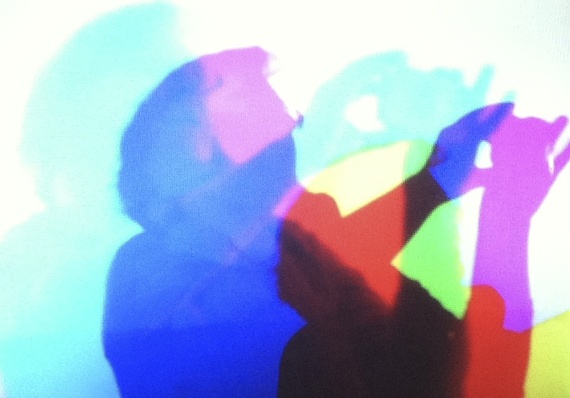Recently, at the Museum of Modern Art with my niece, I found something unexpected blocking my favorite Van Gogh: a young woman standing with her back six inches away from the canvas, taking a "selfie." As we strolled around the galleries, I spotted more of them. Selfies in front of the Jackson Pollack. Selfies in front of Monet's Water Lilies. Selfies in front of Campbell's Soup Cans. Like most technology-driven social phenomena, museum selfies seemed to have mushroomed overnight.
Until recently, the only digital annoyance I remember having to contend with in art museums was other visitors photographing the art at close range. Many museums allow non-flash photography, and it's true that if a lot of people are taking pictures it can obstruct others' view of the painting. Still, why shouldn't someone be able to photograph a work of art they love -- in order to enjoy and remember their museum experience later? Obsessive photo-taking might be somewhat self-centered in that there is no consideration about how it is impinging on the sight lines of others around them. On the other hand, the desire to capture the beautiful images of the art makes it ultimately a forgivable practice.
However, the narcissistic knee-jerk act of the museum selfie is in a whole other category. Now, not only can't we see the art because someone is standing right in front of it, we are forced to look at the selfie subject(s) instead of the art. The art is now the background to the selfie-taker--as if it were wallpaper, or the view from the Empire State Building. The implication is that the work of art is secondary in importance to the person in front of it. Obviously it's your choice if you want to have Van Gogh's The Starry Night as your own personal backdrop (although I myself do not have that kind of hubris). The problem is that you are changing the art experience of those around you. Even when selfie-takers are not completely obscuring the art, it's psychologically impossible to ignore it when someone is making themselves the subject; it's hard to look past them at the painting. It is just like trying not to listen to someone talking on his cell on the train.
It's difficult to say which is worse: The fact that we seem to need to document every moment of our existence or the need to put ourselves at the center of everything. (The selfie has become such a part of our culture that it was even the title of a TV show on ABC.) Because digital photos are free and easily deletable images we are in the habit of taking them without much thought. In museums, we sense we are having an important experience. We see beautiful art. We are moved, excited. The contemporary conditioned response to this emotion is to whip out the camera. And it is also highly contagious behavior. Once you see someone else doing it, you figure: Wait, maybe this would make a cool picture--me in front of a famous painting. This would be great on Instagram.
It's pretty hard to fight the sweeping tide of cellphone selfie-taking per se. Besides, selfies are not all bad. In the old days when you traveled to Paris, you would have to ask a passerby to take a photo of your and your friend in front of the Eiffel Tower. Now you can just take it yourself. Isn't this convenience an improvement? I have also seen some wonderful museum selfie photos that are a playful or ironic statement on the art: for example, a picture of person standing to the side of the painting imitating the pose of the subject in the painting, or a photo where it looks as if the person depicted in the painting is actually holding the phone. This kind of art riffing--which some people might find offensive--demonstrates a creativity I can't really object to.
What I will object to is the "selfie stick," a device for extending the cellphone an additional arm's-length away. Even though I caught many people taking selfies in the museum, thank god I did not see anyone using one of these relatively new gadgets. (Is it just me, or does the term "selfie stick" sound pornographic?) The sticks are already in wide use in Asia, which is a sign they will probably be trending here very soon. What these accessories will mean in museums, of course, is an even more hindered view of the art, as using the stick allows for more people to fit into a group selfie-portrait.
So there I was, at MOMA with my niece, frowning inwardly and eschewing the whole self-involved, self-aggrandizing selfie trend. Until - er... guess what? My niece suddenly whipped out her iPhone to snap a selfie of us standing in front of a Gauguin. Did I resist? Did I take a stand against the decline of respect for great art? Or did I lean my head happily against my niece's, open my eyes wide and smile gaily?
Like I said, these technology things are contagious.
